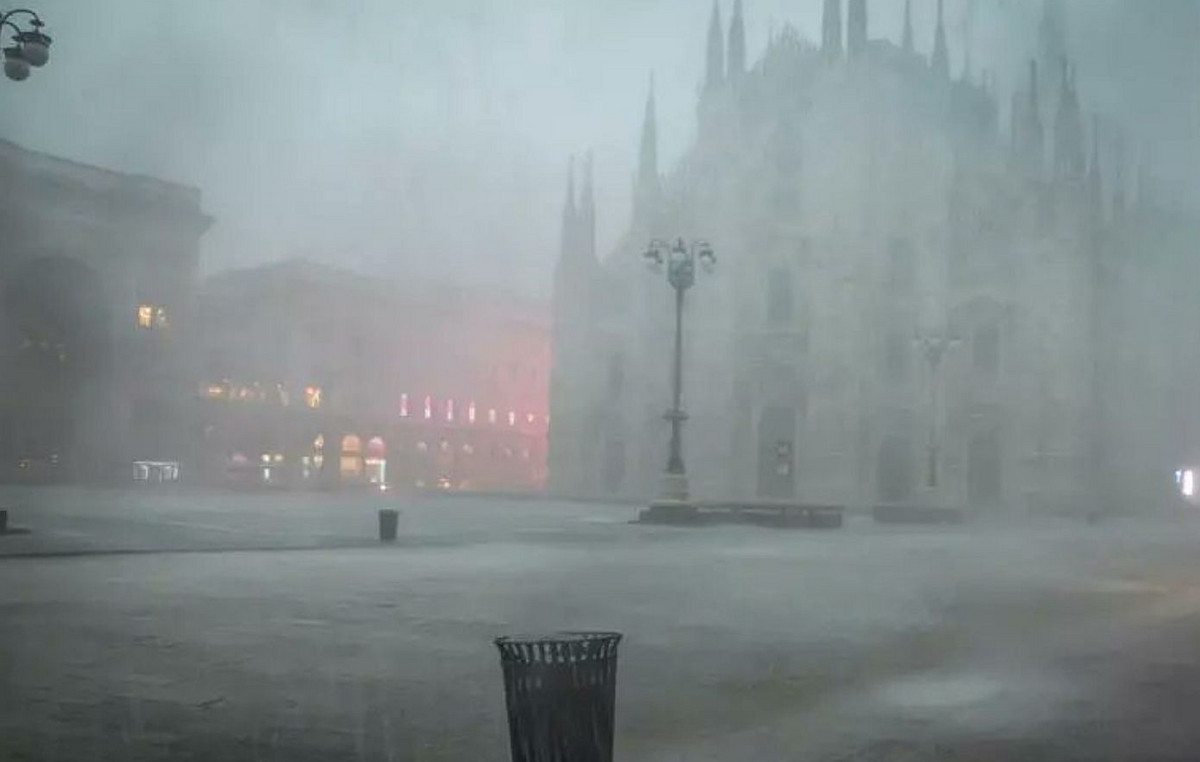Wolves are associated with howling at the moon – a common myth that has become widely accepted over the ages.
Despite the fables, that hasn’t stopped people from connecting the moon with furry animals.
The first full moon of the year is called the “Wolf Moon” by Northern Hemisphere popular culture and will appear on the night of this Monday, January 17th.
The moon is named after wolves because they howl more often at this time of year, according to the Old Farmer’s Almanac.
The peak will be at 23:51 GMT (at 20:51 GMT). According to NASA, look above the horizon in an east-northeast direction to catch a glimpse of the moon.
Some moon watchers can detect a bright star near the full moon. It is Pollux, a star that is part of the constellation Gemini, NASA said.
Both Jupiter and Saturn will also be visible, but they will be facing the moon above the southwest horizon, NASA noted.
More than a full moon
There are a plethora of names for the January full moon, in addition to the Wolf Moon, it is also known as the Old Moon and the Ice Moon.
Hindus refer to her as Shakambhari Purnima, which marks the last day of Shakambari Navratri, an eight-day holiday honoring the goddess Shakambhari. People in India often bathe in holy waters during this time, NASA said.
The Assiniboine people, who live in the Northern Great Plains of the United States, call this the central moon because it is in the middle of winter, according to the Old Farmer’s Almanac.
The Algonquin people, located northeast of the Great Lakes, also in the USA, call it “squochee kesos”, which means “the sun has no strength to melt”. The Cheyenne people of the Great Plains call it the “hard cold moon”.
Full moons and supermoons
The year 2022 will have 12 full moons, two of which qualify as supermoons.
Definitions of a supermoon can vary, but the term generally denotes a full moon that is brighter and closer to Earth than normal and therefore appears larger in the night sky.
Some astronomers say the phenomenon occurs when the moon is within 90% of perigee – which is when it reaches the closest point to Earth in orbit. By this definition, the full moon in June, as well as the full moon in July, will be considered supermoon events.
Here is the list of the other full moons of 2022, according to the Farmer’s Almanac:
- February 16: Snow Moon
- March 18: Worm Moon
- April 16: Pink Moon (Pink Moon)
- May 16: Flower Moon
- June 14: Strawberry Moon
- July 13: Buck Moon (Deer Moon)
- August 11: Sturgeon Moon (Sturgeon Moon)
- September 10: Harvest Moon (Harvest Moon)
- October 9: Hunter’s Moon
- November 8: Beaver Moon
- December 7: Cold Moon
While these are the popularized names associated with the monthly full moon, each carries a varied meaning among Native American tribes.
lunar and solar eclipses
According to The Old Farmer’s Almanac, there will be two total lunar eclipses and two partial solar eclipses in 2022.
Partial solar eclipses occur when the moon passes in front of the sun, but only blocks part of its light. Be sure to wear proper eyewear to safely view solar eclipses, as sunlight can be harmful to your eyes.
On April 30, a partial solar eclipse can be seen over southern South America, the southeastern Pacific Ocean and the Antarctic Peninsula.
On October 25th, another will be visible in Greenland, Iceland, Europe, Northeast Africa, the Middle East, West Asia, India and West China. None of the partial solar eclipses will be visible from North America.
A lunar eclipse can only occur during a full moon, when the sun, Earth, and moon align and the moon passes into the Earth’s shadow. The Earth casts two shadows on the Moon during the eclipse. The penumbra, which is the partial external shadow, and the umbra, which is the total and dark shadow.
When the full moon moves into the Earth’s shadow, it darkens but does not disappear. Sunlight passing through Earth’s atmosphere illuminates the moon dramatically, turning it red – which is why this is often called a “Blood Moon”.
Depending on the weather conditions in your area, it may appear rusty, brick, or blood red.
This is because blue light undergoes stronger atmospheric scattering, so red light stands out as the most dominant color as sunlight passes through our atmosphere and casts it at the moon.
A total lunar eclipse will be visible from Europe, Africa, South America and North America (excluding northwest regions) between 9:31 pm on May 15 and 2:52 am on May 16 in New York City (from 11:31 pm on May 15 until 04:52 on May 16, Brasília time).
Another total lunar eclipse will also be on display for those in Asia, Australia, Pacific, South America and North America on November 8, between 3:01 am and 8:58 am NYT (or between 5:01 am and 10:58 am ET) – but the moon will be setting for those in eastern regions of North America.
meteor showers
The new year began with the Quadrantid meteor shower, which peaked during the first week of January.
The next, the Lyrid meteor shower, is not expected to peak until April.
Here are the other rains to watch out for in 2022:
- Lyrids: April 21st and 22nd
- Eta Aquáridas: 4 and 5 May
- Southern Delta Aquarids: July 29 and 30
- Alpha Capricornids: July 30th and 31st
- Perseids: August 11th and 12th
- Orionids: October 20th and 21st
- Southern Taurids: November 4th and 5th
- Northern Taurids: November 11th and 12th
- Leonidas: November 17th and 18th
- Gemini: December 13th and 14th
- Bears: December 21st and 22nd
If you live in an urban area, drive to a location that is not crowded with city lights, which can obstruct your view. If you can find an area unaffected by light pollution, meteors can be visible every two minutes from late at night until dawn.
Find an open area with a clear view of the sky. Make sure you have a chair or blanket to lie on so you can look up. And give your eyes about 20-30 minutes to adjust to the darkness – without looking at your phone – so meteors are easier to spot.
This content was originally created in English.
original version
Reference: CNN Brasil







